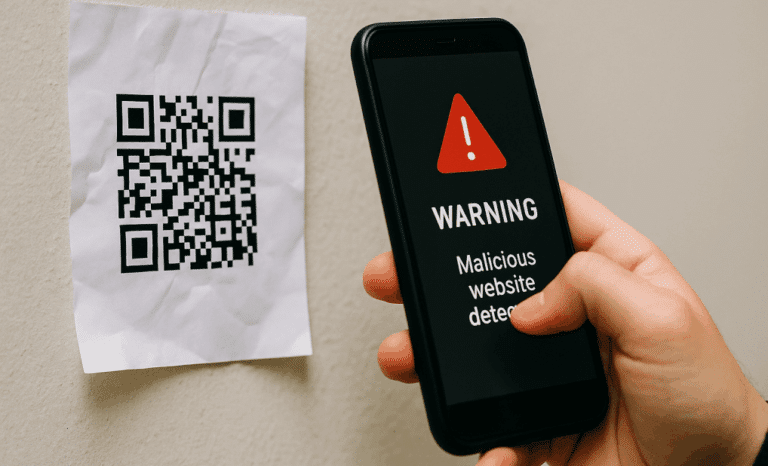What is quishing? It’s a fast-growing cybersecurity threat that blends the familiarity of QR codes with the tactics of phishing. At its core, quishing refers to QR phishing—a type of attack where a malicious QR code is used to lure someone into scanning a code that leads to a fraudulent website or action, such as entering their login credentials, downloading malware, or revealing sensitive information.
As QR codes (short for “quick response” codes) become more common in restaurants, advertisements, packaging, and business processes, so too do the risks of misuse. And like always, there are bad actors who take advantage of every opportunity to do harm. That’s why at QRCodeKIT, we work hard to make QR experiences safe. We comply with all the necessary ISO certifications that ensure security, reliability, and trust.
In this article, we’ll help you understand how to detect a quishing attack, what warning signs to look for, and how to protect yourself—because when used correctly, QR codes make life easier, more connected, and more efficient.
Why QR codes are attractive to cybercriminals
The appeal of QR codes lies in their simplicity and versatility. They can be scanned in seconds using a smartphone and are often seen as a user-friendly authentication method. Businesses use them to direct customers to payment portals, download apps, collect reviews, track inventory in real time, and more.
But this convenience comes with a dark side. The QR code displayed to the user hides the destination URL. When someone scans a QR code, they can’t immediately see where it leads. A malicious QR code can redirect users to malicious websites, impersonate legitimate QR codes, or trigger downloads of malicious software without the user’s knowledge.
This ability to obscure the QR code’s destination makes it easy for attackers to manipulate users—especially when combined with real-world tactics like replacing public QR codes with fraudulent QR code stickers.
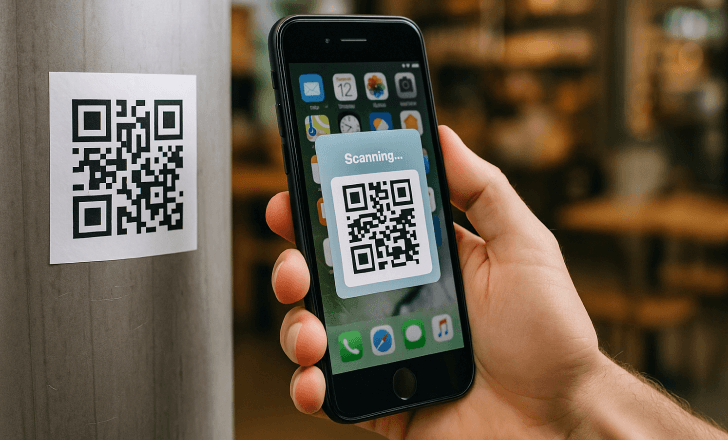
How quishing works
Quishing attacks can take many forms, but they all share a few common elements. An attacker creates a fake QR code and places it somewhere the victim will scan it—this could be on a flyer, sign, email, SMS, or even a printed receipt. The goal is to convince the user that the QR code is trustworthy.
Once scanned, the QR code might:
- Open a fake login page mimicking a company portal or payment processor, tricking users into submitting company login credentials or financial information.
- Automatically download malware onto the mobile device, compromising its security.
- Link to phishing sites that request sensitive data like ID numbers, passwords, or credit card details.
- Redirect to malicious links that exploit browser vulnerabilities.
- Install tracking scripts to harvest valuable data about the user or device.
Some quishing attacks are so well-executed that even cybersecurity professionals can be fooled at first glance. The QR code looks normal. The website seems secure. But behind the scenes, your personal or financial information is being stolen.
Quishing in action: examples of real-world attacks
Imagine sitting at a café. On the table is a QR code with a sign that says “Scan to access free Wi-Fi.” You scan it without thinking. It takes you to what looks like a legitimate login page, asking for your email and password. Moments later, your credentials are in the hands of a cybercriminal.
Or consider an employee who receives a text message that looks like it’s from IT support. “Please scan this QR code to update your security settings,” it says. The link leads to a fake login page for their internal system. Now the attacker has access to company login credentials, and possibly to the whole corporate network.
These are not hypothetical scenarios—they’re based on documented quishing attacks that have targeted individuals and organizations worldwide.
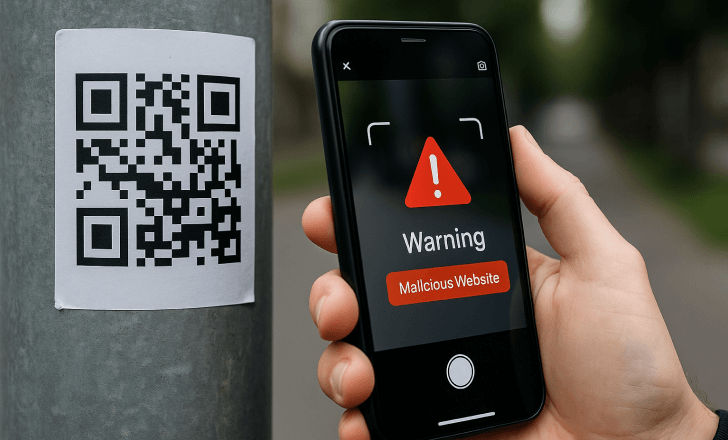
Who is at risk of quishing attacks?
Anyone who regularly scans QR codes is potentially vulnerable, but certain groups are more likely to be targeted:
- Employees in hybrid or remote work environments, especially when QR codes are used for quick response login or 2FA prompts.
- Retail and hospitality customers, where QR code scanning is common for menus, feedback, or payments.
- Students and educators using QR codes to access online platforms.
- Healthcare providers and patients interacting with QR codes on forms, prescriptions, or portals.
- Business travelers in airports, hotels, and transit systems, where public QR codes are abundant.
As phishing tactics evolve, quishing will likely become even more targeted—designed to steal sensitive data in sectors like finance, healthcare, logistics, and government services.
Static vs dynamic QR codes: what’s safer?
Understanding the difference between static QR codes and dynamic QR codes is essential in the fight against quishing.
Static QR codes are hardcoded—they always lead to the same destination and can’t be edited after being created. Once printed, they’re vulnerable to misuse. If a cybercriminal copies your static code and replaces the destination page with a malicious site, you’ll have no way to stop it unless you reprint everything.
Dynamic QR codes, on the other hand, are powered by a short redirect link that you can update at any time. This allows you to track usage, update URLs, and, most importantly, protect your audience if anything suspicious occurs. A good platform like QRCodeKIT offers real-time analytics, editable links, and advanced features like access control or custom domains—making it harder for cybercriminals to impersonate your brand.
That said, both types can be leveraged by attackers. The key is understanding how the code is generated, displayed, and secured.
How to detect a quishing attack
Recognizing a quishing attempt before it causes damage isn’t always easy, but there are red flags you can look out for. Here’s a quick checklist:
- The QR code appears on a random sticker or seems out of place.
- You see a QR code in an unexpected location or receive one via text message from an unknown sender.
- Scanning the code opens a login page or payment portal that seems slightly off (typos, unusual URLs, no HTTPS).
- The page requests sensitive information that the provider shouldn’t need, like full credit card numbers or PINs.
- The code asks you to download an app or file without prior context.
- The design of the QR code displayed looks too generic or too customized in a way that hides its pattern.
When in doubt, don’t scan or exit immediately if something doesn’t look right. Treat QR codes the same way you’d treat email attachments or shortened links—scrutinize the source.
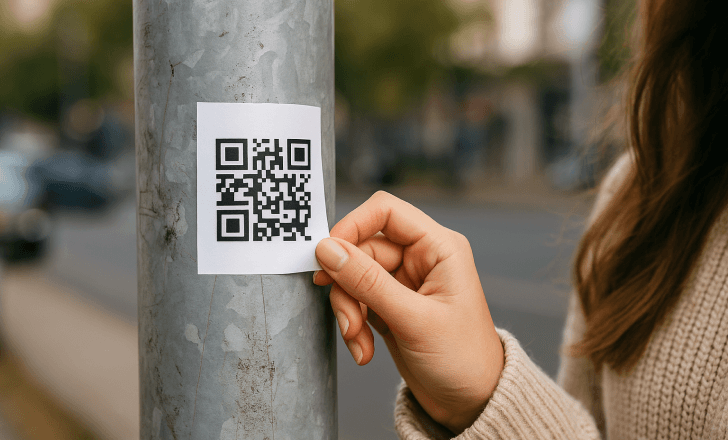
Tips to stay safe when scanning QR codes
To minimize your risk and protect your data, here are a few practical tips to apply in daily life:
- Inspect the QR source: If it looks like a sticker, it might be covering up the original. Peel it off if you can.
- Preview the destination URL: Many reliable QR code readers allow you to see where the code leads before opening the link.
- Use security software: Some QR scanning apps or mobile browsers come with built-in malware detection.
- Avoid scanning public QR codes you didn’t expect to use—especially in high-traffic areas.
- Enable two-factor or multi-factor authentication (2FA/MFA) on all your accounts. Even if credentials are stolen, access will still be blocked.
- Update your device software regularly to patch known vulnerabilities.
- Verify with the source if you’re asked to scan a QR code for login or payment. For example, check with your company’s IT team before proceeding.
These simple actions can prevent you from falling for a quishing attack that might otherwise lead to identity theft, data breaches, or financial loss.
How businesses can protect their audience from quishing
Brands that use QR codes to engage customers—on packaging, in ads, or on receipts—have a responsibility to ensure they’re secure. Here’s how:
- Use branded QR codes or custom domains to make them more recognizable and harder to spoof.
- Prefer dynamic QR codes that allow tracking, URL editing, and expiration features.
- Educate users with clear instructions: explain what to expect after scanning.
- Display QR codes only in controlled, tamper-proof environments.
- Monitor scan activity using a reliable QR code platform like QRCodeKIT to detect unusual traffic or spoofing attempts.
- Avoid using public QR codes for sensitive actions like payment processing or account login unless proper encryption and verification are in place.
By taking these precautions, companies not only reduce risk—they also build trust and show users that their data and safety matter.
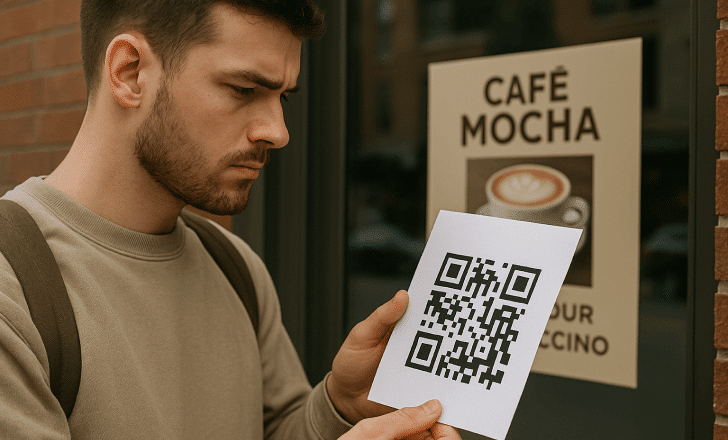
Quishing is here to stay—but so is awareness
As technology evolves, so do the methods that attackers use to exploit it. Quishing is just one example of how quick response codes can be manipulated for malicious purposes. But it’s not the QR code itself that’s the problem—it’s how it’s used.
With education, the right tools, and a bit of caution, both individuals and organizations can stay a step ahead of new phishing tactics. The next time you see a QR code—whether on a menu, receipt, or product label—take a moment before you scan. Verify the source, preview the link, and protect your sensitive information.
QR codes make life easier—but only when they’re used safely.
